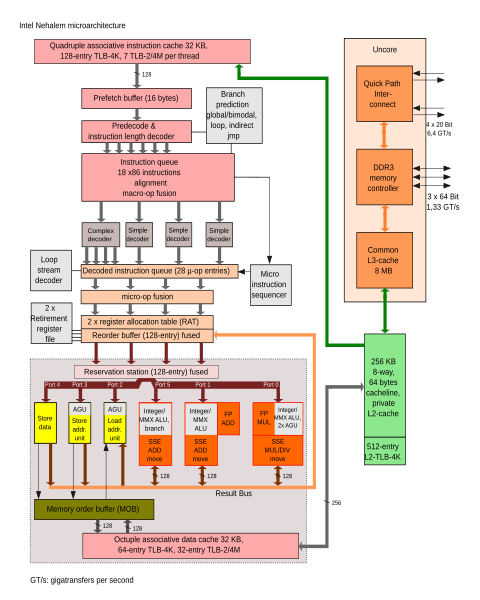Am I nuts, or is all this flap about PC "multi-processing" just smoke and mirrors? I'm running Windows 7 and I like it from a user standpoint. But from a programmer view, I see small clues that tell me Microsoft is once again fundamentally blowing smoke and telling me that I love it. Small clue: on Windows XP/Vista/7, there is no Fork() process/thread...if there is I haven't found it. When I'm programming, in Rexx (why? because I like it), there is no "immediate return" from anything...not I/O, not after calling an independent process/program, not even allowing execution from a stack after my program has terminated...the system doesn't read the stack between program/process executions.
NONE of this stuff is true when I'm running a Linux/Un*x OS. Rexx itself has a Fork() function on those platforms, you can do overlapping I/O, and schedule an immediate execution of a process/program via the stack. So whatever the limitations are, they are not in the hardware...although I have some misgivings about that...the limitations are in the Windows Operation Systems whatever the flavor. And I think I know why...and it sucks for all of us.
First of all, let me back up and define some terms. What does "multi-core" mean?...it means NOT stacking all of a CPU's circuits on one chip, because of heat considerations. They are spread out on thinner chips because they cool faster when running. They are NOT multiple CPU's. What is "parallel processing"? That is the scheduling of independent processes which are part of the same overall problem set, that eventually have to be serialized when putting together the entire answer to the problem set. And what is "multiprocessing"? That is the utilization of several CPU's which have been logically bound together for the efficient scheduling of subtasks within an operating system.
So what do we have today? We have multi-core systems that imply they are multi-processors (not true!). Some
claim to run parallel processing but what they really do is run "distributive processing" among the chips in a multi-core CPU. (For "distributive processing" see SETI@home, a brilliant concept for worldwide processing.)
Having said all this, I understand that in human terms there isn't any difference today between a display that takes 1 millisecond to propagate and one that takes 100 milliseconds. It's normally faster than we can think. But tomorrow, it might make a huge difference...see Moore's and Amdahl's laws. And gamers already know what CPU speed means.
So my rant is with Microsoft and its inability to step up to the state of the art. They cannot bring themselves to do that because...if any of its operating systems were coded as true multiprocessing systems, then Windows XP, for example, would never need an upgrade to Vista or 7, it would run just fine forever, or at least a long time between upgrades, and Microsoft will not tolerate that. It means big $$$$ to them and big expenditures for you and me.
NONE of this stuff is true when I'm running a Linux/Un*x OS. Rexx itself has a Fork() function on those platforms, you can do overlapping I/O, and schedule an immediate execution of a process/program via the stack. So whatever the limitations are, they are not in the hardware...although I have some misgivings about that...the limitations are in the Windows Operation Systems whatever the flavor. And I think I know why...and it sucks for all of us.
First of all, let me back up and define some terms. What does "multi-core" mean?...it means NOT stacking all of a CPU's circuits on one chip, because of heat considerations. They are spread out on thinner chips because they cool faster when running. They are NOT multiple CPU's. What is "parallel processing"? That is the scheduling of independent processes which are part of the same overall problem set, that eventually have to be serialized when putting together the entire answer to the problem set. And what is "multiprocessing"? That is the utilization of several CPU's which have been logically bound together for the efficient scheduling of subtasks within an operating system.
So what do we have today? We have multi-core systems that imply they are multi-processors (not true!). Some
claim to run parallel processing but what they really do is run "distributive processing" among the chips in a multi-core CPU. (For "distributive processing" see SETI@home, a brilliant concept for worldwide processing.)
Having said all this, I understand that in human terms there isn't any difference today between a display that takes 1 millisecond to propagate and one that takes 100 milliseconds. It's normally faster than we can think. But tomorrow, it might make a huge difference...see Moore's and Amdahl's laws. And gamers already know what CPU speed means.
So my rant is with Microsoft and its inability to step up to the state of the art. They cannot bring themselves to do that because...if any of its operating systems were coded as true multiprocessing systems, then Windows XP, for example, would never need an upgrade to Vista or 7, it would run just fine forever, or at least a long time between upgrades, and Microsoft will not tolerate that. It means big $$$$ to them and big expenditures for you and me.


 ), and the productivity gains are enormous. I can create stuff now in less time that looks better and is more functional than ever before.
), and the productivity gains are enormous. I can create stuff now in less time that looks better and is more functional than ever before.